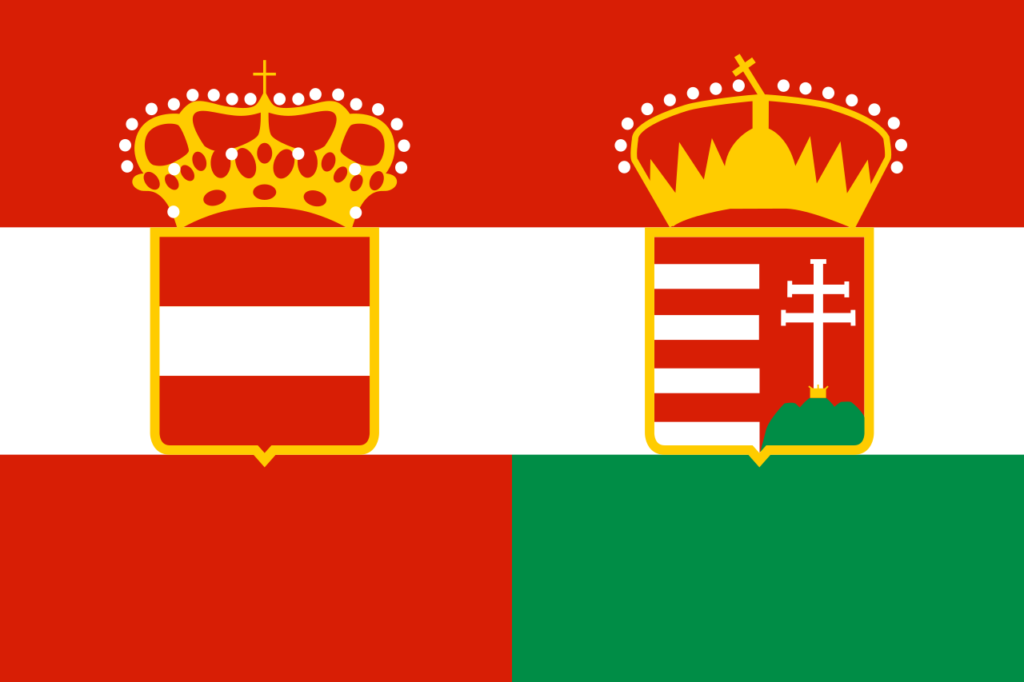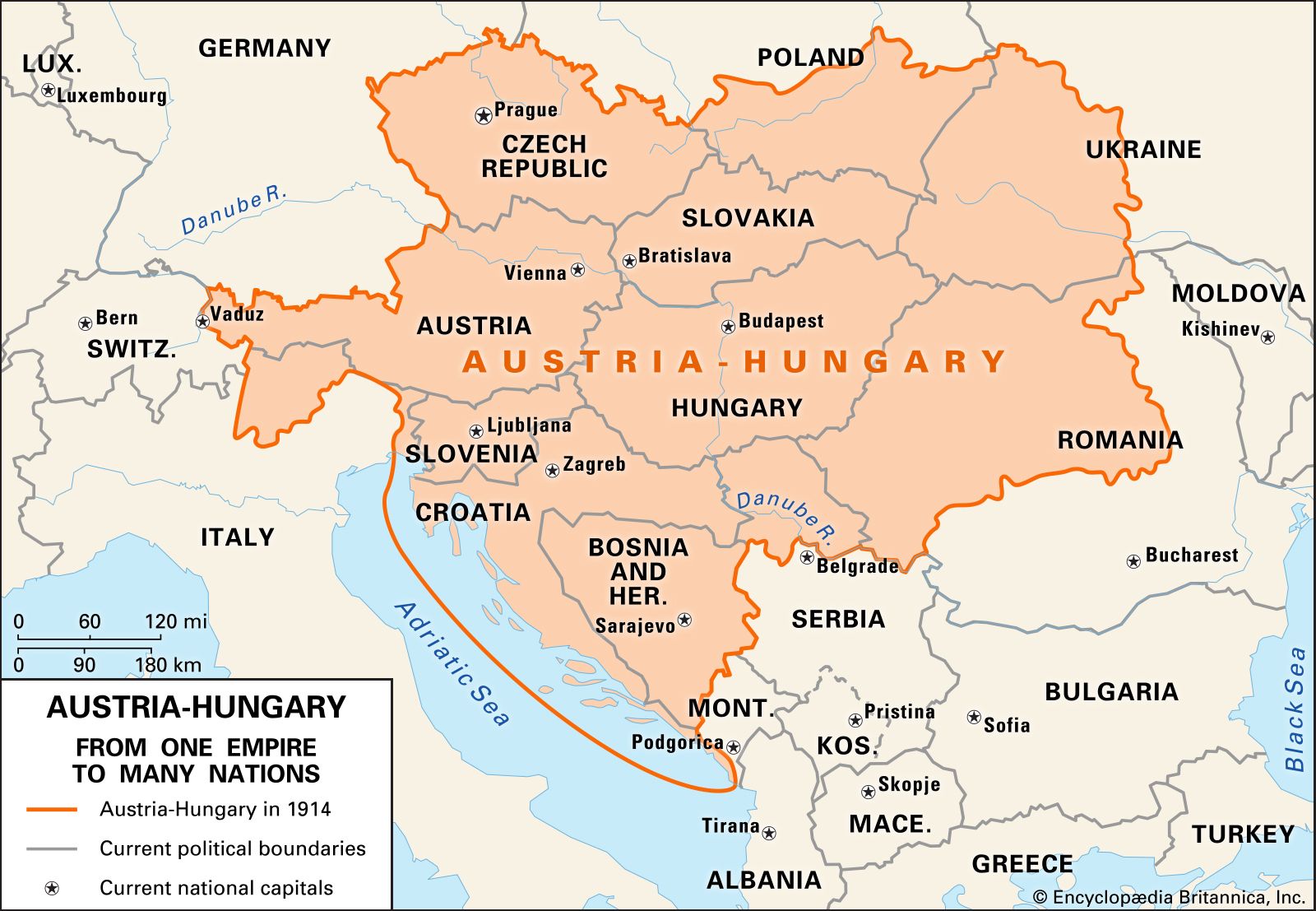This is what the flag of Austria-Hungary looked like:

History of the Flag
Austria-Hungary was a multinational state that existed on the territory of modern Europe until 1918. The first and only variant is accepted as definitive and the one with which the empire is commonly associated. Also, it is sometimes referred to as the civic flag of Austria-Hungary, because of the total heterogeneity of the political society (many nationalist uprisings of different peoples and communities, and others).
In 1867, Austria and Hungary effectively began to exist as one political entity, but with the condition that the latter retain some powers. This is where the flag of the new empire comes from!
In multinational states, it is difficult to find a common, unifying factor of consolidation — and so it was with the flag. Each nation sought to demonstrate its importance, which turned into lively discussions and conflicts. At the same time, the chosen version of the empire’s flag did not change until the collapse of the empire.
Description
The flag of Austria-Hungary is an equal presence of the two flags of Austria and Hungary, with the coats of arms at the same time (at the same height — above the center). Both countries have a common central stripe, which is present on the flag without separations — a symbol of unity and partnership. Also, what these two states have in common is the struggle for sovereignty, which resulted in their common political union and the formation of an empire.
The colors of the Austro-Hungarian flag and their meaning
- Red is a symbol of the blood shed for the independence and sovereignty of the empire (formerly for Austrian and Hungarian sovereignty separately, as two neighboring countries). On the Austrian side, the color red is duplicated and present in greater numbers, which emphasizes the difficult fate of Austria, in the course of the historical and political life of the country.
- White is the color that symbolizes the common essence and soul of the two nations as well as the moral purity and nobility of the political ideals.
- Green (Hungarian side) — an unwavering symbol of hope for the future for the country. The aspiration for the development of the national idea.
General information about Austria-Hungary
| Official language | German, Hungarian |
| Capital | Vienna, Budapest |
| Territory | 676,615 km2 |
| Population | 52,749,900 people |
| Currency | guilder, krone |
| Period of existence | 1867 — 1918 |
Map of Austria-Hungary











Hi, while correct in saying this is the civic flag of Austria-Hungary, you are completely incorrect in saying it was only «sometimes used». The flag you have shown was only flown by civilian merchant ships, never in official capacity. there was no «flag of Austria-Hungary» as Austria-Hungary wasn’t a nation, but rather a collective of two nations. The correct version is to show the Hapsburg Flag and the Hungarian Flag side by side and say «these where the flags». its an easy mistake to make as everyone thinks that is the flag thanks to wikipedia making a mistake. Thank you for reading
Как историк, я всегда был очарован многогранной историей Австро-Венгрии. Флаг этой империи, состоящий из горизонтальных полос красного, белого и черного цветов, олицетворял союз различных народов и культур. Он стал символом мощной многокультурной державы, способной объединить под своим крылом множество этносов. Интересно, как эта символика сохранилась в исторической памяти и как она может рассказать нам о современных понятиях нации и идентичности. Стоит ли нам переосмыслить этот флаг в контексте нашего времени и рассмотреть его как напоминание о важности взаимопонимания и интеграции разных культур?
Absolutely, the flag of Austria-Hungary represents unity in diversity! I remember visiting a cultural festival where different ethnic groups showcased their traditions. It reminded me of that historic symbol’s essence. Rethinking it today can inspire us to embrace multiculturalism and foster understanding among various communities.
I totally agree! I had a similar experience at a food festival where different cuisines were celebrated. It really brought everyone together, showing how diverse cultures can coexist beautifully. It’s amazing how these experiences can inspire us to appreciate our differences and find common ground!
I remember visiting a museum and seeing the flag of Austria-Hungary. It was fascinating to learn how this empire once played such a crucial role in European history. The design was so unique, and it really made me think about how flags tell stories of nations and cultures.
I remember visiting a museum where they had the flag of Austria-Hungary on display. It was fascinating to see how it represented such a diverse empire. Learning about the different cultures that existed under that flag made me appreciate history a lot more!